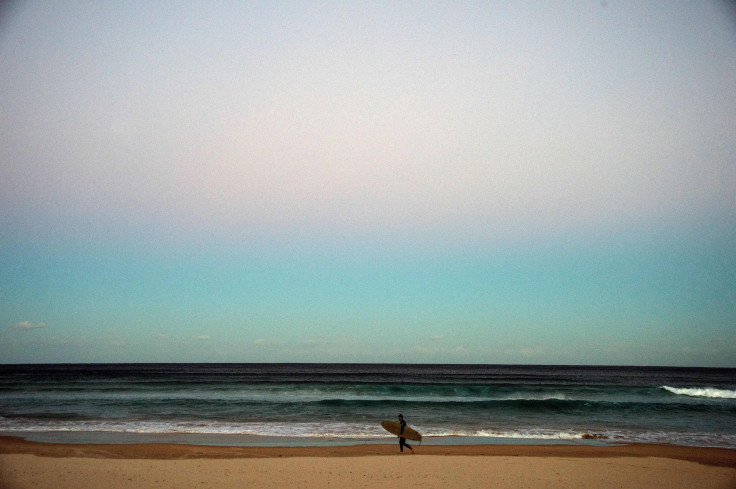WATCH: Mysterious Sea Creatures Eat Meat After Bloody Attack On Teen

An Australian teenager Saturday said mysterious sea creatures ate through his skin at the Dendy Street Beach in Brighton, Melbourne.
Sam Kanizay, 16, went to soak his legs at the bay after a football match on Saturday. Half an hour later, he walked out of the water with his legs covered in blood and saw tiny sea creatures gnawing at his legs.
READ: Watch This Mysterious Massive Sea Creature Rotting On Indonesian Beach
"When he got out, he described having sand on his legs, so he went back in the water," his father Jarrod Kanizay said. "He went back to his shoes and what he found was blood on his legs. They [the sea creatures] ate through Sam’s skin and made it bleed profusely."
Sam's father was curious to know more about the marine creatures responsible for the attack on his son. So he went to the beach Sunday night and placed a net full of meat in order to capture and film the creatures. The footage showed hundreds of those mysterious creatures swarming around the food.
"What is really clear is these little things really love meat," he told the Herald Sun.
READ: Photo: Mysterious Insect Bite Covers Man In Bruises, Puzzles Doctors
"No one knows what the creatures are. They've called a number of people, whether it's toxicity experts or marine exerts and other medics around Melbourne at least... [and] yep, no one [knows]," he said of the video, showing the bugs in a tray of water devouring chunks of meat.
After the incident, Sam was immediately taken to the Sandringham Hospital when the bleeding did not stop. While he was recovering in the hospital, the family waited for answers as doctors struggled to figure out what had eaten through Sam's skin. The family believed it could be sea lice.
"As soon as we wiped them [his legs] down, they kept bleeding," Jarrod said. "There was a massive pool of blood on the floor [at the hospital]."
In another case of "Welcome To Australia, Let the Wildlife Eat Ya!" https://t.co/DOuGn81wtX
— Adam Is What I Give (@RevHappiness) August 7, 2017
Local swimmer Paul Duckett claimed he never saw such a case before, despite his daily swims at the same spot for the last 16 years. "We swim there every day and we’re in the water for anything from 15 to 30 minutes, and no one’s ever experienced anything like this," he told Fairfax Media.
"This was a first, so that’s why I query whether it’s sea lice or some other creature that have caused the issue."
However, associate professor at Monash University’s School of Biological Sciences Richard Reina told a news website, owned by News Corp Australia, he was confident Sam’s bites were caused by sea lice. "I think it’s very rare," Reina said.
"When it happens you brush it off, or move, or get out of the water and there’s no consequence, whereas in this case, Sam was standing in cold water for quite a long time. He probably thought the pins and needles he described was the cold and didn’t realize there were crustaceans chewing on his feet."
University of Melbourne marine biologist and professor Michael Keough also said the teen was possibly attacked by sea lice, as "they're scavengers who'll clean up dead fish," according to Yahoo News.
"They're mostly less than a centimeter long, and so the bites they make are pretty small, and so that's more consistent with pinprick size marks," he said. "[They will] just be attracted to a little bit of blood. And if he's standing in the water and he's cold [he] may not notice a whole lot of little bites."
University of New South Wales marine invertebrate expert Alistair Poore told the Guardian he had never seen a case like Sam's. He said sea lice could be a possibility but only a huge number could cause such extensive bleeding.
"If it is sea lice, then it is a pretty dramatic example of it," Poore said.
He said people who go for a swim at beaches often mistake stinging from the remnants of jellyfish tentacles with bites. But Poore also mentioned the extensive bleeding in Sam's case appeared too severe for the possibility.
© Copyright IBTimes 2024. All rights reserved.






















